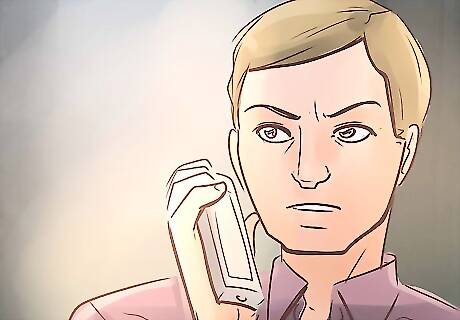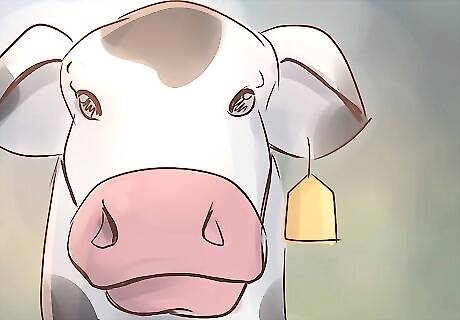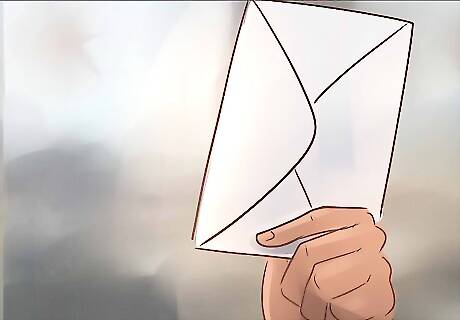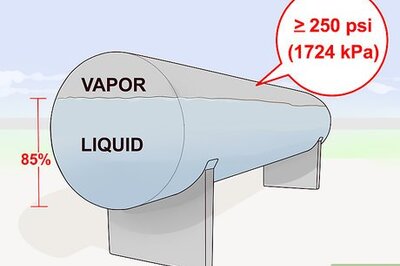
views
X
Research source
To purchase this kind of insurance, you'll want to find a carrier that offers it and then ask for a quote.
Finding Coverage

Research insurance carriers. You can find insurers offering livestock collision insurance by searching online. Enter “livestock collision insurance” into a web browser, and click on the results. Note the contact information for the insurer you're interested in. Typically you can contact an insurer directly through a link on their website. However, you may have to call.

Consider working with an independent broker instead. If you feel overwhelmed or are not having much success finding a suitable insurer, you can choose to work with an independent broker or agent. Many brokers and agents are tied to one particular insurer, but an "independent" agent can represent many carriers and recommend a suitable one for you. He can contact multiple insurers on your behalf and get quotes. You can find a broker or agent in the following ways: Ask another farm owner if they have worked with a broker. If so, ask if they would recommend that person. Look in the phone book. Brokers and agents may advertise in the yellow pages. Search online. Type “insurance broker” and your city into a search engine.

Check with your farm insurance carrier. You might already have a farm or farm-operations insurance policy. You should call up your insurer and ask if they offer collision insurance. Sometimes they will offer it as an additional coverage option.

Determine the breadth of coverage you want. Typically insurers offer three different types of coverage. You should decide which type you want before asking for a quote. The three are: Individual coverage. You can get coverage for only certain animals, usually those of high value. You list the animals individually on the policy, using some marker for identification. Each animal is covered for a certain cash amount. Blanket coverage. This type of policy covers everything—all of your livestock, as well as your equipment, tools, and buildings. Herd coverage. This popular option allows you to get insurance for a specific number of animals, such as 300 pigs or 500 chickens.

Choose a maximum amount of coverage. You can get different coverage amounts, depending on how many animals you are covering and their overall value. You should try to estimate how much coverage you want. Typically you can get the following: up to $1 million per animal up to $10 million per shipment up to $20 million per location

Consider mortality coverage as well. This is not typically included with collision coverage. Mortality insurance will cover things like loss caused by disease, old age, and natural death.
Applying for Coverage

Ask the insurer for a quote. Once you have decided how much coverage you want, you can get a quote. If you aren’t working with an independent broker or agent, you can get a quote directly from the insurer. The insurer will probably require the following information: stocking density building construction details production statistics your loss history for the past several years a survey natural mortality statistics valuation split by location, such as zip code

Analyze the insurance policy. Before signing, you should get a copy of the policy and read it. Make sure it contains all of the coverage you requested. If you don’t understand the policy, talk with someone at the insurance agency. Get all of your questions answered before you purchase the policy.

Look at the premiums. Be aware of what you're paying. Compare your costs against the coverage you are getting. For example, if you are insuring an entire herd, you can expect to pay more than if you are insuring one or two animals. Your premium-per-head will drop as the number of insured animals increases. Consider deductibles. Some insurers don’t require a deductible, but many do. If the insurer does require a deductible, the premium will likely be lower.

Settle on a policy. When you find a policy that works for you, contact the insurer and tell them that you want to purchase their coverage. They'll probably have you sign the policy and send it back to them. Keep a copy of the policy for your records. The insurer should send you a schedule of when your premiums are due. Make note of the dates so that you are not late.

Report new animals. Livestock insurance sometimes won’t cover animals acquired after a policy begins. Report any newly acquired animals to your carrier as soon as possible to be sure they're covered. Read your insurance policy to find out the time limits.

Make a claim. In the event your livestock is injured, you'll want to submit a claim to your insurer as soon as possible. Read your policy to see how much time you have. Also gather the following: your policy number the date of the loss the time of the loss the location of the loss a description of the loss



















Comments
0 comment